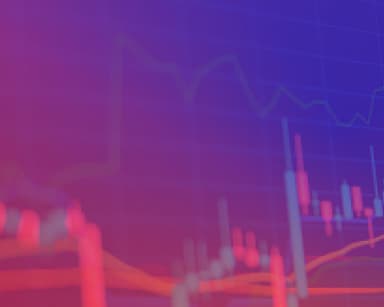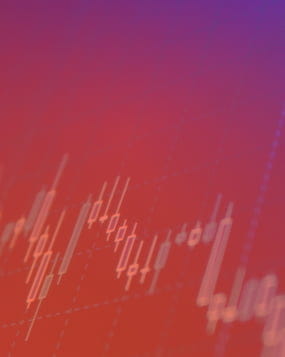- What is commodities trading?
- How do commodity markets work?
- How to trade commodities
- What moves commodities?
- Commodities trading FAQ
What is commodities trading?
Commodities trading is the act of speculating on the price movement of raw materials and natural resources. These commodities are mass-produced and have practical uses, with their values relating directly to the demand we have for them in our society.
For instance, commodities can be goods like coffee that we consume, precious metals or oil and gas that are instrumental in fuelling the global economy.
They are split up into two groups: soft and hard commodities.
- Soft commodities are agricultural products such as coffee, soy and corn
- Hard commodities are natural resources such as gold or oil
How do commodity markets work?
Commodity markets trade on exchanges, like stocks. However, instead of trading the commodities themselves, most buying and selling take place via futures – derivatives that enable speculators to trade on commodity prices without taking delivery of huge amounts of assets.
You can still buy and sell commodities for delivery today, using the spot market. But trading them online to make money has become much more popular.
What are commodity futures?
Commodity futures are contracts that give the buyer the obligation to trade an asset (such as oil or gold) for a set price on a set date in the future. Whatever happens to the asset’s price in the meantime, you’ll still pay the pre-agreed upon price.
Say you buy a future to trade gold at $1,800 in three months’ time. When the future expires, gold’s price is 1,900 – so your future enables you to buy it for a $100 discount.
Most futures contracts today are settled in cash. So instead of buying gold for $1,800 to profit from your future, the future seller would just pay you the $100 directly. By buying the future, you’ve taken a long position on gold without ever owning the underlying asset itself.
Commodity spot markets
Unlike futures, spot markets are settled at the current price for immediate exchange.
Because futures markets are settled on an upcoming date, their prices are always forward-looking. Spot markets, on the other hand, tell you precisely how much it would cost to trade a commodity today.
Trading commodities with City Index
With City Index, you can take your position on 20+ commodities – including oil, gold and silver – via spread betting and CFD trading. With both, you can choose to trade on the futures or spot price of your chosen market, giving you maximum flexibility.
- Find out more about spread betting on commodities
- Find out more about the commodity CFD markets we offer
How to trade commodities
1. Choose your market
The first thing you need to do to trade commodities is choose a market. It’s important to know the characteristics of the markets and their roles in the wider financial ecosystem before you choose which commodity to trade.
Here’s a guide to main commodity markets:
Oil markets
Markets like Brent and WTI Crude oil are two major commodity markets and are seen as benchmarks in the oil industry. These markets are dictated by geopolitical events like international conflicts that can interrupt the supply of these commodities.
Oil benchmarks tend to see a lot of volatility. During the coronavirus pandemic, for instance, global demand for oil fell drastically. This fall in demand saw oil prices reach all-time lows.
Find out more about trading oil markets with City Index.
Precious metals
Precious metals such as gold and silver have held an intrinsic value in society for thousands of years, and are now seen as ‘safe-haven’ assets. This means traders invest in these during times of volatility to protect the value of their portfolios.
Precious metals also have strong correlations to specific markets. For example, AUD is strongly correlated to gold because Australia is a large producer of precious metals.
With City Index, we offer spread betting, CFD trading and futures markets on a range of different metals.
Agriculture
Agricultural markets are food or natural resources like cotton and lumber that are produced on farms or plantations. These resources have many practical uses in our society and for that reason are valuable, sought-after goods.
There are many different agricultural markets, such as sugar, corn, wheat, soy, lumber, corn and even live cattle. These markets have a heavy reliance on weather conditions in order to produce a strong harvest. As such, price volatility can depend heavily on seasonality factors, which is something to take into account.
2. Choose to go long or short
Once you’ve settled on a market, it’s time to decide whether you want to go long or short. Going long refers to opening a buy position on a commodity, which means you’ll profit if the price rises. Shorting is taking a sell position in the hope that the market’s price falls and you can close out your trade for profit.
You should be aware of the long-term trends of each commodity and understand what factors might influence their prices before deciding whether to open a buy or sell position.
Precious metals like gold and silver, for example, tend to retain their values due to certain desirable characteristics that make them useful in our society. Whereas oil markets, like Brent and WTI Crude, are much more prone to unpredictable moves (both up and down) due to their connection with factors like geopolitics.
3. Manage your risk
The markets are unpredictable, but one certainty that’s always present is the risk you take on in placing any trade. It’s key to offset this by managing your risk as best as possible.
A staple of any risk-management strategy is stop-loss and take-profit orders. These are highly useful tools and can secure profit and limit losses on a trade. Let’s take a look at each one.
Stops
Stops are risk management tools that allow you to automatically close out a trade at a set level, should the market move against your position – helping you to limit losses. For long trades, a stop-loss order is placed below the current market price. For short trades, they are set above.
So, if you are long on gold at a price of 1,800, you might set your stop-loss order at 1,600. This means that if gold’s price falls to that level, your trade will automatically be closed out. You will still incur a loss, but you’ll protect yourself from suffering more severe losses if the market, for instance, completely crashes and you don’t have time to manually close your position.
Take profits
On the other hand, limit orders close out your position when they are up, securing profit.
Let’s use that same long trade on gold at 1,800 as an example. You might set your limit order at 2,000. This means if gold’s price reaches that level your position will be automatically closed out – securing your profit.
Closing out trades at the optimum moment is extremely difficult and limit orders will guarantee you make a profit at a level you’re happy with.
4. Open and monitor your position
After you’ve decided on your stops and limits, you need to choose how much of the market you want to trade by setting an amount within the trade ticket. Then simply click ‘Place Trade’ to open your position.
Once your position is open and your stop-loss and limit orders have been set, you should then be monitoring your trades. While orders can help you manage your open positions autonomously, it’s still worth putting in some time to monitoring them.
To monitor a trade, you can look at both fundamental and technical aspects of your market. On the technical side, you can look at how the price has moved and try to identify any patterns that indicate where the market might move next.
From a fundamental viewpoint, it’s more about reading news that might impact your markets and trying to get a gauge of how prices might move from this. Market events relevant to your commodity are also worth keeping an eye on as they can catalyse price movement.
For example, OPEC can have a major influence on the world’s oil supply. So any OPEC meeting will be worth following in order to monitor any oil positions you may have.
What moves commodities?
The main basis of any commodity price movement is supply and demand. To trade commodities successfully, it’s important to understand how supply and demand can be affected so you can try to anticipate and predict how the markets might react.
The following factors are significant in influencing the supply and demand for commodities, and can subsequently have a huge bearing on commodity price moves.
- The environment
- Geopolitical instability
- The global economy
The environment
Commodities are exposed to environmental issues that can impact supply and have the potential to significantly move commodities. These are often difficult to accurately foresee. An example with agricultural markets is if one time of the year is wetter than usual or warmer than expected, then prices will move as the market tries to adapt to how the supply will be affected.
Geopolitical instability
Geopolitical instability has the potential to impact many markets, but commodities often feel the effect more than others.
For example, a large amount of the world’s oil is produced in the Middle East, with Saudi Arabia alone contributing to over 12% of global oil production. When oil bases in Saudi Arabia were attacked in 2019, oil prices rose immediately, with consumers anticipating a disruption to supply.
The global economy
Commodities are valuable resources in economies worldwide. Oils are used to fuel our transport, precious metals are used heavily in industrial industries and crops like wheat are a vital food resource. When an economy is growing, there will naturally be more demand for these resources. However, the supply of these is often limited for various reasons. For instance, poor weather can reduce the supply of crops, and natural fossil fuels and precious metals are finite resources. As such, if global economic demand is high, this can cause the prices of these commodities to rise.



